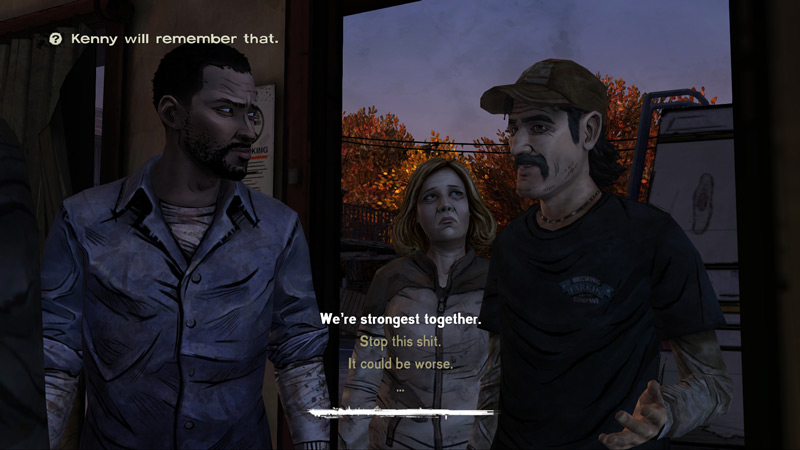Our interview with Matthias Kempke from Daedalic Entertainment (Deponia, Night Of The Rabbit) on narrative design in games.
Box: What modifications does story arc demand in order to increase game replayability?
Matthias:
Well, there are many reasons to play a game again and again. Some games you want to play again because the gameplay itself is so challenging and so much fun! (Mario Kart etc.) Here the story doesn’t really matter — although it should fit the context and motivate.
Games on the other hand, that are story driven might have a high replay value, when
a) the player can die by gameplay or story choices or
b) you have different storylines and endings through choice — or a mix between a and b.
In case a) the death should not feel unfair and frustrating; otherwise the player won’t try again. The story in that case needs to be interesting enough to motivate the player to play again and continue.
Replaying shouldn’t feel to unfair either — if the player needs to replay too much without having fun and or doing / seeing something new, he will lose motivation to play again. In case
b) the most challenging aspect is to show the player how he HIMSELF changed the outcome (Show him what choices he has or that something he did or said had an effect on the story “Peter will remember you stole his lollipop.”) — otherwise he won’t have the feeling that he could change the outcome by playing again.
I think the most important aspect is: if you have multiple storylines and endings then all should feel important and cool – otherwise if players get one of the boring alternate endings instead of the cool one you actually had in mind for the game anyway, then they might feel cheated.
On the other hand if you tell them “Hey, there is a better ending, so if you try hard and play again you might see it!” that might motivate some strange people out there. But still whatever they got in their version might be the last they see from your game, so it should feel great or sad or cool – and not just like a second class ending.
Once the player plays the game again, then he should have the feeling that his choices actually had a meaningful and interesting influence on the story. So if he sees two or three versions he shouldn’t think “Meh, it was all the same anyway.”. This is okay if you want to give people the illusion of choice (while playing it once), but not if you actually want them to enjoy playing again (two or three times.) So if you already have a story arc think about what key situations and decisions it contains and how these affect the story.
Some decisions can be small and fun: Pete picks up a hat instead of a gun, so later on he’s wearing the hat and can’t help his friend. His friend got the gun now, though, so aside for that situation and some funny lines it didn’t matter that much: the friend shoots, both survive. If the friend gets shot though instead Pete saving him, then his friend will be gone forever and Pete might feel responsible throughout the rest of the game.
As you see, there’s still a lot of illusion going on, because you can’t build so much different content. So the most important thing is: make it feel meaningful and emotional and rewarding. Let the player know that what he got was his choice, but that he could also have seen something else too. Also maybe reward him by showing exclusive content which only appears in certain story lines.
This is the most rewarding, but also the hardest thing for you to do, because you produce individual content, which the one-time player might NEVER see.
Box: What are the most successful examples of replayable stories in your opinion?
Matthias: The Stanley Parable, because replaying the game is part of the basic concept and they play with the whole topic. There are other examples of storylines that take interesting turns or have different endings, but usually I never felt compelled enough to play them again (Walking Dead, Castlevania: Dawn of Sorrow). But I haven’t played many of them yet.
Box: Can the essential parts of a story be brought to a player by random events/triggers?
Matthias: I haven’t tried it yet, but it should be possible. This might mean the order in which the story gets told might change, too: if you allow story part 5 to happen before story part 1 it might have a chilling effect – either you already know the cookies have been poisoned or not. (Might be frustrating if you play it the second time around as your character might not know the cookies are poisoned but you, the player, know from playing the first time.)
This CAN work and be very interesting if the story itself allows itself to be told this way. The player might react differently to story parts in different surroundings etc. Interesting! If it’s random though the replayability might be frustrating if the player can’t control in what situation he gets a story part – and then can’t do something he could do in first playthrough, but didn’t do back then and wanted to do the second time around. (Complicated!)
Box: Is it necessary to keep core idea stable, strict, static?
Matthias: No. Except if you want it to be. You can do anything, as long as it doesn’t feel random or boring or cheap. I always had the stable core ideas, because I always liked the story I had developed and never wanted to do “versions” of it, that just feel less good. Again, all content should feel good and meaningful, most players might not be lucky enough to get to see the best storyline and ending you came up with first.
Box: What kinds of a player choice exist in a game writing? For example, Kentucky Route Zero offers very nominal choices – unlike FTL…
Matthias: All kinds of choices exist – doing sth, doing nothing, going a certain way, giving a certain answer, doing something in a certain order etc. On what consequences that might have or not have and how I believe the player should be told about it, see my answers above.
Box: What kinds of a player choice did you use mostly in your work?
Matthias: Not many actually Except the Illusion of freedom where to walk and who to talk to. But the game was still pretty linear – the world wasn’t but the puzzles were. Many people didn’t realize that, because it was well hidden in a relatively open world with seemingly many possibilities. Since I was an indie person so far and was on a very limited budget, I just tried making that one story as good as I could. Also I always loved the story too much to make alternate versions. – but I’m definitely trying that in the future too.
A little Box: What kind of a player choice is the most convenient for you?
Matthias: Of course a fake one . That means the outcome will be almost the same in the game, but you only realize that when you play again and try something else or when you talk to someone else who made another decision and still had the same things happening afterwards as you did.
Box: What text limitations (by a word, by a symbol) do you use in your work? For dialogue replicas (maybe 140 limit, like in twitter)? For journal entries? For quest descriptions? For a whole script?
How these limits varied from project to project – from “What Makes You Tick?” dilogy to “The Night of The Rabbit”?
Matthias: An average adventure game has maybe 30.000 words. In WMYT I had about 6000 words maybe. Stitch in Time had probably 40.000 and Night of the Rabbit 32.000 … You should check whether you’ll do voice recordings, because those can be very expensive.
Descriptions and such as well as anything that isn’t interactive (dialogue and conversations) should be relatively short or at least concise and to the point. I try to shorten a lot of texts later on as I tend to write too much in the first draft. Sometimes I don’t have time to do that and regret it when people tell me, the dialogue was too long. The best way to test it: Find people who try it and give honest feedback. But I think: Less is more. Show, don’t tell if possible.








